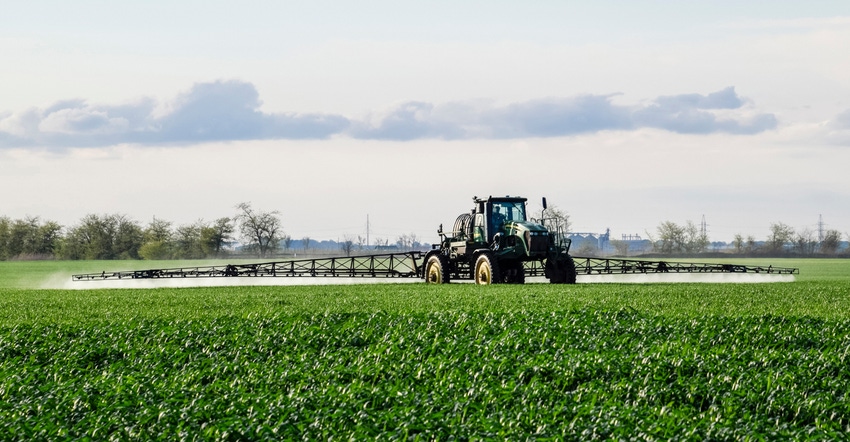
Jeffrey Cassim was first introduced to the fertilizer industry when he worked for Nourse Farms in Whatley, Mass., in the mid-1970s. Little did he know at the time that fertilizers would define his career in agriculture.
Cassim is managing partner of Liquid Products LLC in Waterloo, N.Y., one of the largest liquid fertilizer manufacturers and distributors in the Northeast with 3 million gallons of storage capacity. It’s the most recent iteration of a company that once was known as Old Fox Chemical Co., which Cassim joined in 1979.
The company built one of the first pipe reactors — a device that reacts phosphoric acid and anhydrous ammonia to produce liquid phosphate — on the East Coast that enabled the production of high-quality liquid fertilizer.
The Waterloo facility, a converted fuel terminal, was a first, Cassim says, because there was no other facility that far inland, at least at the time, that stored UAN on-site in any size or quantity.
The company went through several ownership changes, having been bought by Nutrite Inc. of Canada in 1988, then by Norwegian company Hydro in 2000, which pioneered the production of anhydrous ammonia.
Five years later, the company spun off its fertilizer division, and Cassim, along with a group of investors, formed an LLC and bought the company from Hydro. It’s been operating since 2005.
Cassim’s longtime involvement in the fertilizer business and New York agriculture earned him the 2020 Industry Impact Award from the New York State Agribusiness Association. A great year in crop prices is forecast across the country.
As such, Cassim talked about trends in the fertilizer industry:
You started out with UAN back in the 1970s. Can you talk about where the industry’s been headed since then? There's been a big shift from the way things are applied. Back in the ’70s, there was a lot of broadcast fertilizer. We, little by little, have gone to placed fertilizer. First, it was next to the seed at 20 gallons per acre; now we're putting it on the seed at 3 to 5 gallons per acre, so there's a shift there. And that has to do with efficiency and placement and timing.
We specialize in pop-up fertilizers, and those pop-up fertilizers, most of those are prescription. And they're blended to a spec that's based on a soil test and a recommendation by an agronomist. So, we'll get a recommendation, we'll get a request from the ag retailer to make a combination blend, and we formulate it and they come in and pick it up.
Where are fertilizer prices headed into the 2021 growing season? The prices have really increased since November. The major reason for it is the crop report came out, the ending stocks report came out, and it was reported that the ending stocks of grain — particularly corn and soybeans — where way less than they thought.
Ever since, November prices have crept up. There has also been some appreciation in fertilizer materials because the planting intentions for 2021 are very strong. And so there's big demand for crop inputs, and there's some shortages, if you will, or some shortfalls in the supply.
Where are you seeing short supplies? The dry phosphate market changed last fall. Domestic producers filed suit against Russia and Moroccans, claiming they were dumping product.
The duty has been between 25% and 75%. So the Russians aren't going to bring product into the U.S. if they have to spend a 75% duty. So the imports of dry phosphates, particularly MAP and DAP, have been greatly reduced. And so that has caused the price of phosphates, they came off of a 12-year low, and so now they have passed where they were 12 years ago and are double what they were.
What are you seeing in terms of fertilizer demand? We have more sold to date than normal at this time, a lot more. The orders for spring are heavy.
Normally, it's not until the middle of March when farmers make their decisions, but because of the enthusiasm for crops, farmers put in their orders in December.
What trends are you seeing for fertilizer use in the future? We specialize in fertilizer that goes into the soil, but there's a whole other spoke to the wheel; that is the foliars. So foliar feeding is already a big deal.
There are more and more applications over the top with these high boys, and they're going after insects or going after disease. So, it's a perfect time to put some nutrients down to give them a boost.
The biological thing is really starting to unfold. And we are adding more and more of those products because the customers are asking for them. So, we're talking humic acid and folic acid, or biologicals added to the fertilizer we produce. There's nothing better than being able to do more than one job at the time.
At a time when the 4Rs of crop management are being promoted, where do you think the fertilizer industry stands? When liquid fertilizer was starting to come out, [the 4Rs] was a pretty big sell job because farmers would say I just put lots on and spread it evenly, and I'm going to have a good crop. We're talking 50s and 60s.
But then as time went along, people found that if they put things at the right time in the right rate in the right form, in the right quantity, at the end they'll have more efficiency and do the right thing for the environment.
I think that we fit it very well. Liquid fertilizers fit in very well because we 're talking about low rates and precision placement with the right product at the right time, so I think we fit in very well with that.
About the Author(s)
You May Also Like






